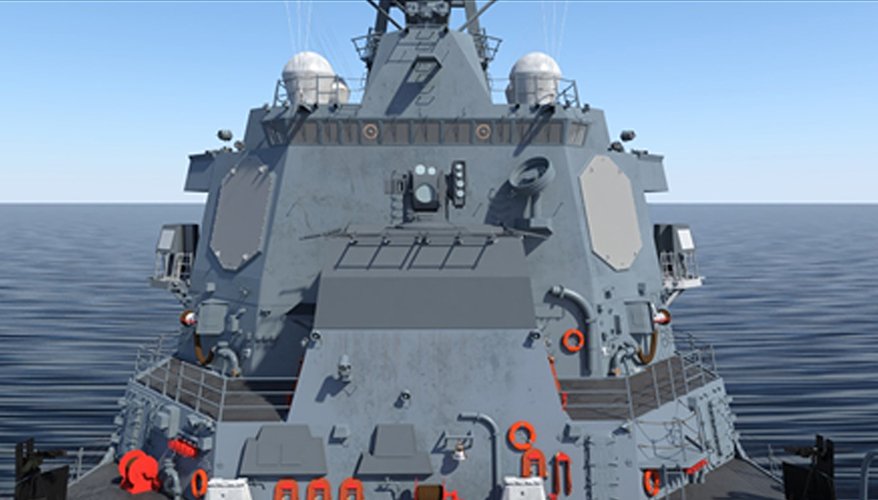Stew Magnuson

Depending on who you ask, directed energy weapons are either “here and now” or still not ready for prime time.
Their potential as a weapon of war has been touted since the science fiction character Buck Rogers showed up in newspaper comics in 1929 carrying an atomic pistol.
But almost 100 years later, soldiers still can’t say, “Set phasers on stun!”
Directed energy weapons come in two categories: high-energy lasers and high-powered microwaves.
The U.S. military has pursued this technology for decades, with promises of them being deployable “in just a few years.”
On paper, they look great. As long as a warfighter doesn’t have to shoot down anything past the curvature of the Earth — they can only fire in a straight line — users would have an almost “unlimited magazine.” Imagine not having to lug all that ammunition around.
A member of the “here and now” crowd is one of the Pentagon’s point persons on the technology, Mark Spencer, director of the Joint Directed Energy Transition Office, which is within the Office of the Assistant Secretary of Defense for Critical Technologies created by Undersecretary of Defense for Research and Engineering Heidi Shyu.
The future is now for directed energy weapons, he asserted during a panel discussion at the recent Association of Old Crows annual conference. It is a “game-changing technology,” he said.
“Is it the be-all and end-all of technologies that’s going to solve all of our problems? No. However, when we start to think of how we’re going to employ these future systems for these future fights, directed energy does play a role from a systems perspective,” Spencer said.
He noted that directed energy weapons have often been portrayed as just five years and five million dollars away. However, the days of “overpromising and underdelivering” are coming to an end, he said.
He listed six programs on a slide called “Deployed DE Systems to Date.”
They included: the ODIN, Optical Dazzling Interdictor (Navy); HELIOS, High-Energy Laser with Integrated Optical-Dazzler and Surveillance (Navy); Solid State Laser – Technology Maturation (Navy); CLaWS, Compact Laser Weapon System (Marine Corps); HELWS, High Energy Laser Weapon System (Air Force); and THOR, Tactical High Power Microwave Operational Responder (Air Force).
But looking at the smaller print on the slide showed that the weapons — mostly envisioned as counter-drone systems — may have been “deployed,” but not in great numbers and mostly for test and evaluation. There are eight ODINs on Navy destroyers, one HELIOS, one Solid State Laser on a landing platform dock, five CLaWs, three HELWS in an undisclosed location and one THOR. That adds up to 19 directed energy weapons.
Underwhelming to say the least.
One person who would agree with that statement is Vice Adm. Brendan McLane, the new commander of the Naval Surface Force, U.S. Pacific Fleet, who in a keynote speech at the Surface Navy Association confab in January called for a directed energy weapon to be deployed on every Navy ship.
It had been almost a decade since the Navy made history and installed an experimental 30-kilowatt Laser Weapon System, or LaWS, on the then-USS Ponce Austin-class amphibious transport vessel, he noted.
“I am not content with the pace of directed energy weapons. We must deliver on the promise this technology gives us,” he said.
As he spoke, the Navy was in a high stakes battle in the Red Sea with Houthi rebels, who were launching missiles and kamikaze drones at commercial and military ships.
Many of those targets could be taken down with directed energy weapons if they were deployed on Navy ships, he said. As of press time, they were not being employed.
National Defense later in the conference asked DDG-51 Program Manager Capt. Seth Miller if there were any size or power restrictions that would prevent them being deployed — as McLane asked — on destroyers. There were none, he answered.
A recent report by the National Defense Industrial Association’s Emerging Technologies Institute, “Directed Energy Weapon Supply Chains: Securing the Path to the Future,” spelled out a few reasons why McLane and Spencer’s visions of widespread fielding of directed energy weapons will be difficult to realize.
Current directed energy weapon “supply chains, including critical raw materials, the manufacturing base and workforce and testing infrastructure are incapable of supporting [directed energy weapon] deployment at scale,” the report said. They are only able to produce small quantities of systems with long lead times, it added.
The report had several recommendations that would help the Defense Department usher the way to wider deployment: provide consistent demand signals to industry; secure rare earth elements needed to operate the system such as gallium and germanium; establish programs of record; develop a workforce with directed energy expertise; and diversify the supply chain by including international allies and partners.
While there are roadblocks to widely deploying directed energy weapons and a great deal of uncertainty as to when they will be common on battlefields, one thing is certain — the demand.
The wars in Ukraine and Gaza, the Navy battle in the Red Sea and U.S. programs in development all point to drone swarms being the future of warfare.
Directed energy weapons with autonomous targeting, wide beams, nearly unlimited magazines and low cost-to-shot ratios are proving in experiments that they can be an effective countermeasure to kamikaze robots.
No comments:
Post a Comment